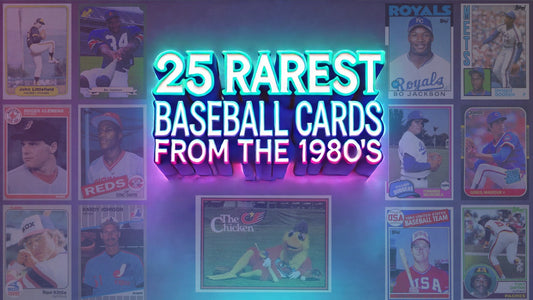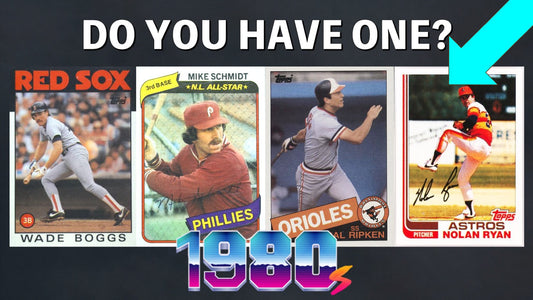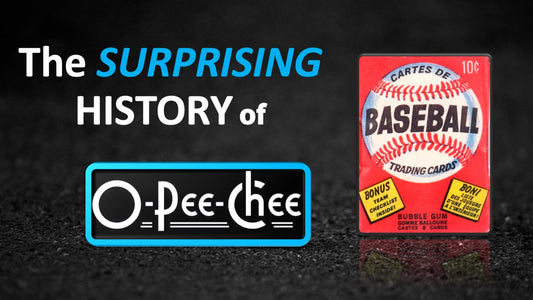
How Upper Deck Changed Baseball Cards Forever
In 1989 4 guys met in a card shop and planned to take over the baseball card industry from Topps. And it worked out better than they could have ever imagined.
1989: Upper Deck's Market Entry and Initial Disruption Background and Market Conditions Pre-1989 Market: The baseball card market was dominated by Topps, Fleer, and Donruss. The cards were often criticized for their low-quality cardstock, basic designs, and susceptibility to counterfeiting. Upper Deck's Innovations High-Quality Production:
Cardstock: Upper Deck introduced cards printed on high-quality, thick cardstock. This was a significant improvement over the flimsy materials used by competitors. Glossy Finish: Each card had a glossy finish, which made the images more vibrant and appealing. This finish also provided better protection against wear and tear.
Advanced Printing Techniques: Photography: Upper Deck used high-resolution, full-color photography, which was far superior to the standard images used by other companies. The images were sharp, well-composed, and often featured dynamic action shots. Design: The card designs were clean and modern, with a focus on aesthetics. Borders were minimized to emphasize the photographs. Anti-Counterfeit Measures: Holograms: Each card featured a hologram sticker on the back as a security measure to prevent counterfeiting. This was a groundbreaking feature at the time and significantly enhanced the perceived authenticity of Upper Deck cards.
Premium Pricing Strategy: Pricing: Upper Deck cards were priced higher than those of competitors, reflecting their premium quality. This pricing strategy positioned Upper Deck as a high-end brand in the market. Star Power and Key Releases: Ken Griffey Jr. Rookie Card: The 1989 Upper Deck #1 Ken Griffey Jr. rookie card became an instant hit and is still one of the most iconic baseball cards ever produced. Griffey was a highly touted prospect, and his card's inclusion as the first card in Upper Deck’s inaugural set added to its allure.
Star Players: The set also included cards of other popular players like Nolan Ryan, Bo Jackson, and Randy Johnson, adding further appeal. Pack Configuration: Foil Packs: Upper Deck used tamper-proof foil packaging, which helped maintain the integrity of the cards and reduced the risk of pack searching and resealing—a common issue with wax packs used by other companies.
Collector-Centric Approach: Limited Print Runs: Unlike competitors who flooded the market with high print runs, Upper Deck maintained relatively limited print runs, increasing the scarcity and desirability of their cards. Serial Numbers: Some cards featured serial numbers, which was a novel concept at the time and added a layer of exclusivity and collectibility.
Impact on the Market Industry Standards: Upper Deck's innovations set new standards for quality and security in the trading card industry. Competitors were forced to improve their products to keep up.
Collector Enthusiasm: The higher quality and added features reignited interest in baseball card collecting, attracting both new collectors and lapsed hobbyists. Market Perception: Upper Deck quickly gained a reputation for excellence and innovation, establishing itself as a major player in the trading card industry. Upper Deck's successful entry into the market in 1989 was a turning point for the baseball card industry, driving significant changes in how cards were produced, marketed, and perceived by collectors.







